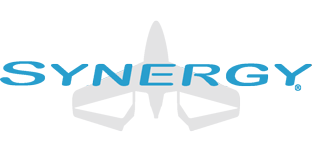By analyzing the pressure and velocity distributions required to maintain an attached boundary layer. Natural laminar flow is relatively easy to achieve and quite well established today, although many myths persist. Powered ‘boundary layer control’ makes it even easier to achieve, but the benefits are minimal for the speeds where the most research has been done. Its ideal application is to small airplanes at mid-Mach numbers, not the sailplanes and fighter jets often used for testing the concept.
Pioneering work by August Raspet in the 1960s showed that up to 100% laminar flow is easily achieved at general aviation Reynolds numbers if one is able to use power. Suction, applied to perforated wing skins at a rate of 0.0137 horsepower per square foot of wing area, provided laminar flow on turbulent airfoils and very high maximum lift coefficients, on full scale aircraft.
Like many others, our custom ‘natural laminar flow’ airfoils have a very flat pressure and velocity distribution, easily maintaining laminar flow up to 60% of the wing ‘chord length’. Suction is applied beyond this point, which not only stabilizes the boundary layer, but through our proprietary technology, creates ‘pressure thrust’ to result in extremely low drag. We use a number of commercial grade airfoil analysis codes to compare similar airfoils having flight test data, as well as high-end CFD.
There are several reasons why prior boundary layer control initiatives failed commercially. First, aero research at the time was all about transonic flight and very large airplanes, where it was hard to achieve and not helpful. Second, some aspects, such as contamination, water entry, maintenance, and so forth, require significant effort to address. Third, dependencies can be created, in a powered lift system, that create both real and imagined safety issues which must be understood, respected, and mitigated. Fourth, airplanes that could use it really weren’t changing, and it didn’t adapt well to old designs. Finally, a push toward blowing, rather than suction, goofed up the ability for designers to capture what they’re really trying to do, in physical terms.
Today, powered BLC is seldom seen as the easy recipe that it is. Much emphasis is given to using specific ‘proven’ details of hole size, pattern, placement, and so on, without insightful consideration of the simple physics of pressure gradient. Thus the attitude: active laminar flow is complicated and expensive. Probably not worth it!!!
Synergy does not require active flow control to achieve its potential, but it does demonstrate its value.
Categories:

